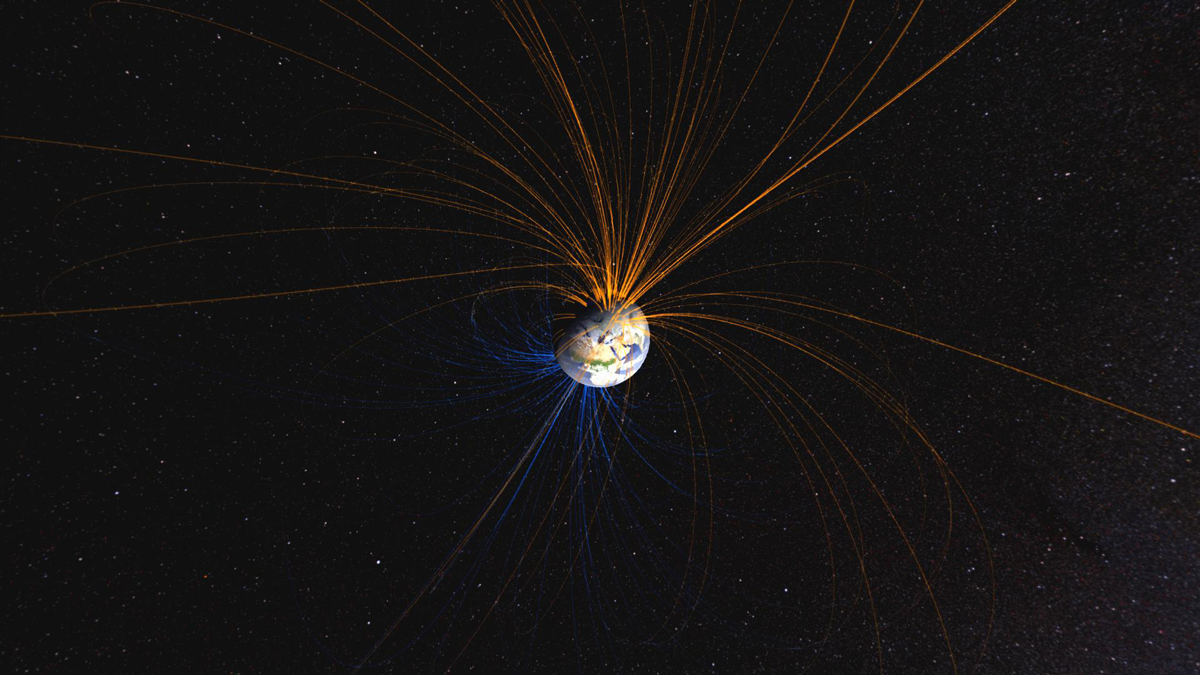For decades, scientists have debated when our planet’s tectonic plates and magnetic field first emerged. These key geophysical features likely provide stability and protection for life on Earth today, but whether they were around for our planet’s earliest life-forms remains an open question.
A new study presented on 15 December at AGU’s Fall Meeting 2021 may have unveiled the oldest known evidence of plate tectonics and a stable dipolar magnetic field resembling Earth’s today. If confirmed, the discovery supports the idea that the physics of our nascent planet generated many of the same features that have nourished life on Earth for billions of years.
“We can actually see original magnetic signatures that tell us that Earth was geodynamically mature—all the way from its surface…down to its deep interior,” said Alec Brenner, a doctoral candidate at Harvard University’s Paleomagnetics Lab and lead author of the study.
Shifting into Reverse
Earth’s magnetic field serves as an invisible shield of sorts, controlling high-energy cosmic particles and solar winds and possibly helping guard us from radiation damage. Meanwhile, closer to Earth’s surface, tectonic plates in the lithosphere shuffle around rocks and other materials. They move back and forth from the crust to the interior, prompting chemical reactions that may help stabilize global temperatures over long time periods—“like a sort of geological thermostat, if you will,” Brenner said.
To investigate the hotly contested origins of our planet’s force field and natural thermostat, Brenner and his colleagues sampled 3.25-billion-year-old rocks from a crater in Western Australia. They analyzed the magnetic signatures of iron-rich particles trapped in the rocks, which aligned with the direction of Earth’s magnetic field at the time the rocks formed in seafloor eruptions, then cooled.
While studying the magnetic signals, Brenner and Roger Fu, a paleomagnetist also at Harvard, noticed something strange. Some of the rocks’ mineralized compass needles pointed one way, but slightly older layers beneath them faced the opposite direction. The researchers soon recognized that they’d stumbled upon signs of a reversal of Earth’s magnetic field—a puzzling phenomenon that results from convection in Earth’s interior.
“I remember the moment when we both realized, ‘Oh, my God, that might be a reversal,’” Brenner said. “We totally lucked out and saw that, but it’s an incredibly important constraint now that we have it.”
The reversal, the oldest ever recorded, indicated that early Earth indeed maintained a magnetic field with a north and a south pole—just like the dipole field that exists today. And because the field’s configuration was so simple, Brenner’s team was able to reconstruct the gradual motion of the rocks over time.
Comparing the magnetic signatures of these rocks with those from two other samples from the same era, they found that the rocks had rotated about 60 angular degrees over roughly 60 million years. The movement is relatively fast and prolonged, implying that the rocks were stationed on migrating tectonic plates, Brenner said.
Early Geodynamical Maturity
The team’s claims are drawing attention. “I think the fact that they’ve got a reversal is really, really cool,” said Leigh Royden, a geologist at the Massachusetts Institute of Technology. While Royden commended the Harvard team’s magnetic field reconstruction, she said the evidence of plate tectonics was “suggestive but certainly not conclusive,” as it doesn’t necessarily rule out other movement mechanisms.
“It paints the picture of the place that life was evolving in. Turns out, very curiously, it was a really calm and stable place.”
“I think whether we had plate tectonics is a very involved question, but it does indicate that this particular area was moving very quickly,” Royden said. Still, this movement could have facilitated some climate-stabilizing reactions, she added.
Whether or not Earth sported tectonic plates 3.25 billion years ago similar to those we see today, this study provides hearty confirmation of the planet’s geodynamical maturity at the time.
“It paints the picture of the place that life was evolving in,” Brenner said. “Turns out, very curiously, it was a really calm and stable place—a place that you might want to go someday, if it weren’t for the fact that there was no oxygen in the atmosphere.”
—Zack Savitsky (@savagitsky), Science Writer


